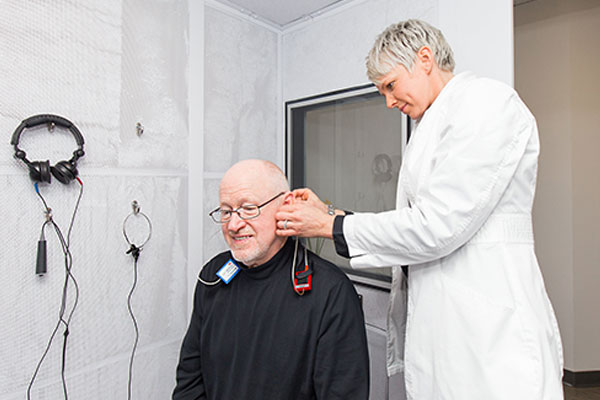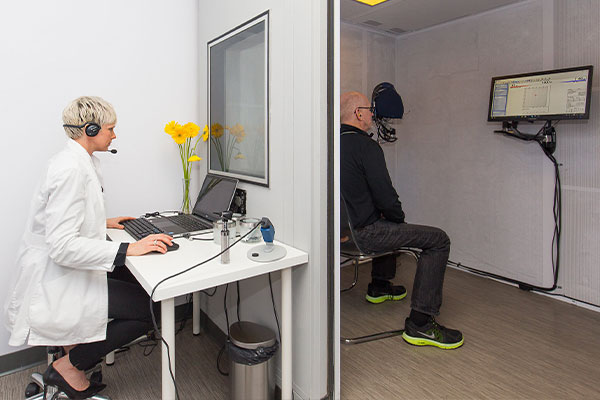Hearing Tests in Berkeley, CA
At Blue Sky Hearing, we’re committed to helping you restore your hearing starting with a hearing test.
A hearing test is an essential part of maintaining your overall hearing health. Using a variety of screening and diagnostic methods, a hearing test can accurately gauge the extent of an impairment as well as which audio frequencies are most likely to be affected. In doing so, hearing tests can effectively identify the earliest signs of hearing loss, often before noticeable symptoms have begun to manifest to individuals.
Even when no hearing loss is present, a hearing test can provide an invaluable baseline against which future declines may be more easily detected. Once diagnostics are complete, we can determine the best course of action.

Hearing Tests at Blue Sky Hearing, Berkeley, CA
There are several different types of hearing tests available.
What Happens During a Hearing Test?
Most hearing tests are conducted in a quiet room. You’ll be given a pair of headphones to listen to sounds, speech, or tones while Dr. Storm observes and notes your responses.
It’s common to undergo multiple diagnostics during your hearing test, as each screening is designed to evaluate a different type of hearing loss. Once all diagnostic tests have been completed, we’ll evaluate your results.
What Does a Hearing Test Show?
Hearing tests, such as audiometry, are designed to provide Dr. Storm with enough information to determine the cause, type, and extent of hearing loss. Generally, hearing test results will be shown via a specialized graph called an audiogram. An audiogram is a graph with two axes: sound level (in dB) and tone.
Your hearing range will be diagrammed out on this graph. Usually, there will be several data points–one for each tone tested, plotted at the edge of your hearing range. As a result, an audiogram will show:
Usually, early hearing loss will affect one frequency more extensively than others. It’s not uncommon, then, to have dips in one area of an audiogram.
What Is the Normal Hearing Range?
The higher your data points appear on an audiogram, the closer you are to a normal hearing range. In general, a normal hearing range is considered to be the ability to hear sounds that are less than 25dB in volume–a sound level roughly equivalent to rustling leaves or whispered words. In general, we use the following categories to define normal hearing and hearing loss:
- Normal hearing: The ability to hear sounds 25dB and below.
- Mild hearing loss: Sounds between 25dB and 40dB are audible, but not softer sounds.
- Moderate hearing loss: Sounds below 41dB-65dB are difficult for you to hear.
- Severe hearing loss: Sounds below 66-90dB are hard to hear.
- Profound hearing loss: Sounds need to be louder than 90dB for you to be able to hear them. That’s roughly as loud as a lawnmower.
Typically, hearing loss does not occur evenly across all frequencies. Simply because your hearing is “normal” at some frequencies does not mean your hearing will be healthy in totality. It’s common to experience severe hearing loss when it comes to high frequencies, for example, but have normal hearing levels across the rest of the audio spectrum.
The Value of a Hearing Test
Whether your hearing is waning or you haven’t noticed any issues, a hearing test is an essential part of your hearing health. If your hearing is fantastic, screenings can provide peace of mind and a benchmark for future tests. And if you have hearing loss, a hearing test can provide a roadmap to the best possible treatment plan.

